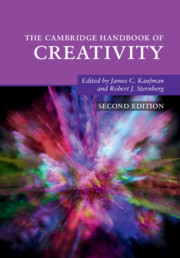Book contents
- The Cambridge Handbook of Creativity
- The Cambridge Handbook of Creativity
- Copyright page
- Dedication
- Contents
- Figures
- Tables
- Contributors
- Foreword
- Acknowledgments
- An Introduction to the Second Edition
- Part I An Introduction to Creativity
- Part II Underpinnings of Creativity
- Part III Differential Bases for Creativity
- Part IV Creativity in the World
- Index
- References
17 - The Function of Personality in Creativity
Updates on the Creative Personality
from Individual Differences in Creativity
Published online by Cambridge University Press: 12 April 2019
- The Cambridge Handbook of Creativity
- The Cambridge Handbook of Creativity
- Copyright page
- Dedication
- Contents
- Figures
- Tables
- Contributors
- Foreword
- Acknowledgments
- An Introduction to the Second Edition
- Part I An Introduction to Creativity
- Part II Underpinnings of Creativity
- Part III Differential Bases for Creativity
- Part IV Creativity in the World
- Index
- References
Summary
Information
- Type
- Chapter
- Information
- The Cambridge Handbook of Creativity , pp. 353 - 373Publisher: Cambridge University PressPrint publication year: 2019
References
Accessibility standard: Unknown
Why this information is here
This section outlines the accessibility features of this content - including support for screen readers, full keyboard navigation and high-contrast display options. This may not be relevant for you.Accessibility Information
- 25
- Cited by
